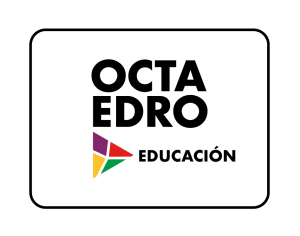UNIT 4 - OERs and Licencing
Open Educational Resources:
TEDed: You can find course materials and create lectures for student groups of almost any level.
You can access the videos prepared by the educators on the TeacherTube: site.
You can access the open course materials prepared by the Turkish Academy of Sciences: National Open Course Materials Consortium.
Khan Academy offers resources used by many students and teachers around the world, at almost every educational level.
OER Commons: Acts to promote openness in education
MERLOT: You can access multimedia educational resources.
Jorum: You can access a lot of educational content.
Open Education
Should you need transcripts or translations as subtitles for the video, please click on the title of the video and you will be redirected to Youtube where subtitles are enabled.
Transcript and multilingual translations
Licencing:
Open license refers to a license that respects the intellectual property rights of the copyright owner and provides permissions granting the public the rights to access, re-use, re-purpose, adapt and redistribute educational materials.
A Creative Commons copyright license is a type of public copyright license that allows free distribution of a copyrighted work or work. When an author wants to give the right to share or make changes to the work he has created, he uses a CC, or creative commons license.
There are various types of Creative commons licenses as well. In order to understand what the terms of use of the resource you found are, you should look at what type of creative commons license it has. We can understand this from the license symbols that we can see in the resources.
Creative Commons
Transcript and multilingual translations
Open educational resources can be prepared and licensed under a creative commons license and made available to others:
CC BY: Attribution This license allows others to distribute, reedit, adapt, and develop this content for commercial and non-commercial purposes as long as attribution is given to the creator. This is the most convenient of the licenses offered. Recommended for the highest level of dissemination and use of licensed materials.
CC BY-SA: Attribution - Share With Same License : This license allows the reorganization, adaptation and improvement of the original material, even for commercial purposes, as long as the original material is attribution and derivative designs are licensed under the same terms. For example: This is the license used by Wikipedia.
CC BY-ND: Attribution-Non-Derivative This license enables others to reuse the material for any purpose, including commercial; however, in doing so, it cannot be shared with others in an adapted form and the original source must be cited.
CC BY-NC: Attribution-NonCommercial This license permits the editing, adaptation, and development of material for non-commercial use. New derived works must cite the original material and again and again must not be commercial.
CC BY-NC-SA: Attribution NonCommercial Share A Like: This license allows the rework, adaptation, and development of the work non-commercially as long as attribution to the original material and new designs are licensed under the same terms.
CC BY-NC-ND: Attribution Non Commercial Non Derivative: This license is the most restrictive of the 6 licenses. The original work can be downloaded or shared with attribution to the owner, but cannot be modified or used for commercial purposes.
Click HERE (Creative Commons licenses) for more detailed information on Creative Commons Licenses.Activity:
OerCommons system: Provides the opportunity to create, license and share content like an educator after standard membership tasks are done.
You can create content with Open Author (Create a standalone learning module, lesson, assignment, assessment or activity) with the Create Resource link in the window that comes up after clicking the AddOER button at the top right.
A sample content preparation after logging into the system as an educator:
Example:
Course: Database Management Systems Course
Subject: SQL queries: "Delete" command
The Title of the Course is written at the top in "Enter a Resource Title".
"Add Title image" can be added in a subsection.
Sectin Name: "SQL Query: Delete code" is written.
Main Content: Delete From table-name, Delete from table-name Where ID="contet"
etc..
import from GoogleDrive
import from OneDrive
facilities are available.
Attach section resources
Add Notes
Insert new Section
Completed with the button.
Activity:
Open up a discussion thread on the Bridges Forum and connect with others on this social platform.
